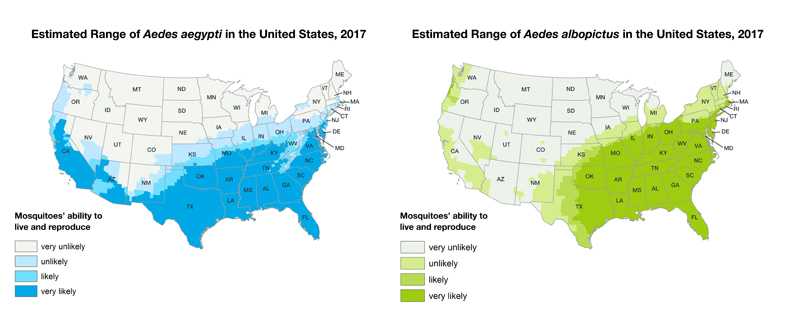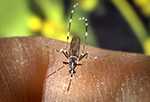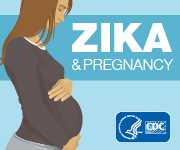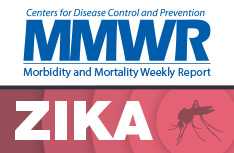Potential Range in US
Estimated range of Aedes aegypti and Aedes albopictus in the United States, 2017*

*These maps represent CDC’s best estimate of the potential range of Aedes aegypti and Ae. albopictus in the United States. Maps do not represent risk for spread of disease.
Estimated range of Aedes aegypti and Aedes albopictus in the United States, 2017 Maps [PDF – 1 page]
Estimated range of Aedes aegypti and Aedes albopictus on US Tribal lands, 2017 Maps [PDF – 2 pages]
CDC has updated the estimated range maps for Ae. aegypti and Ae. albopictus mosquitoes by using a model that predicts possible geographic ranges for these mosquitoes in the contiguous United States. The model used county-level records, historical records, and suitable climate variables to predict the likelihood (very low, low, moderate, or high) that these mosquitoes could survive and reproduce if introduced to an area during the months when mosquitoes are locally active. These maps include areas where mosquitoes are or have been previously found. Maps do not represent risk for spread of disease. Ae. aegypti mosquitoes are more likely than Ae. albopictus mosquitoes to spread viruses like Zika, dengue, chikungunya and other viruses.
These maps show
- The estimated range maps have been updated using a predictive model that used county-level records, historical records, and suitable climate variables to predict the likelihood (very low, low, moderate, or high) that these mosquitoes could survive and reproduce if introduced to an area during the months when mosquitoes are locally active.
- These maps show CDC’s best estimate of the potential range of Ae. aegypti and Ae. albopictus in the contiguous United States.
- These maps include areas where mosquitoes are or have been previously found.
- Maps do not represent risk for spread of disease.
These maps DO NOT show
- Likelihood that these mosquitoes will spread viruses. Shaded areas on the map do not necessarily mean that there are infected mosquitoes in that area.
- Numbers of mosquitoes: These maps do not show how many mosquitoes are living in an area. Mosquito population numbers vary widely across the shaded areas on the map, from high numbers of mosquitoes in some parts of the contiguous United States to rare reports of mosquitoes further north.
- Exact locations of mosquitoes: These maps are CDC’s best estimate of where mosquitoes could potentially live. Actual mosquito populations will vary by state and county. Mosquito populations may be found in an area that is not shaded on the maps and may not be found in all shaded areas.
- CDC is not able to predict exactly how much Zika or other viruses spread by Ae. aegypti or Ae. albopictus could spread if and when local mosquito-borne transmission is detected.
About these mosquitoes
Aedes aegypti
-

- These mosquitoes live in tropical, subtropical, and in some temperate climates.
- They are the main type of mosquito that spread Zika, dengue, chikungunya, and other viruses.
- Because Ae. aegypti mosquitoes live near and prefer to feed on people, they are more likely to spread these viruses than other types of mosquitoes.
Aedes albopictus
-

- These mosquitoes live tropical, subtropical, and temperate climates, but can live in a broader temperature range and at cooler temperatures than Ae. aegypti.
- Because these mosquitoes feed on animals as well as people, they are less likely to spread viruses like Zika, dengue, chikungunya and other viruses.
About outbreaks spread by mosquitoes
- Local spread of Zika virus has been reported in the continental United States.
- Many areas in the United States have the type of mosquitoes that can become infected with and spread Zika, chikungunya, and dengue viruses.
- Recent outbreaks in the United States of chikungunya and dengue, which are spread by the same type of mosquito, have been relatively small and limited to a small area.
- Areas with past outbreaks of chikungunya and dengue are considered at higher risk for Zika. These include U.S. territories like Puerto Rico, the U.S. Virgin Islands, and Guam. Local outbreaks have also been reported in parts of Hawaii, Florida, and Texas.
-
Ae. aegypti or Ae. albopictus mosquitoes can cause an outbreak, if all of the following happens:
- People get infected with a virus (like Zika, dengue, or chikungunya).
- An Ae. aegypti or Ae. albopictus mosquito bites an infected person during the first week of infection when the virus can be found in the person’s blood.
- The infected mosquito lives long enough for the virus to multiply and for the mosquito to bite another person.
- The cycle continues multiple times to start an outbreak.
Protect yourself from Zika and other viruses spread by mosquitoes
- The best way to prevent Zika and other viruses spread through mosquito bites is to take steps to prevent mosquito bites [PDF – 2 pages]. If you are pregnant, strictly follow these steps:
- Wear long-sleeved shirts and long pants.
- Stay in places with air conditioning and use window and door screens to keep mosquitoes outside.
- Use Environmental Protection Agency (EPA)-registered insect repellents with one of the following active ingredients: DEET, picaridin, IR3535, oil of lemon eucalyptus, para-menthane-diol, or 2-undecanone. When used as directed, EPA-registered insect repellents are proven safe and effective, even for pregnant and breastfeeding women.
- Treat clothing with permethrin or purchase permethrin-treated items.
For more information about how to prevent mosquito bites, see Mosquito Bite Prevention (United States) [PDF – 2 pages].
- Page last reviewed: September 20, 2017
- Page last updated: September 20, 2017
- Content source:





 ShareCompartir
ShareCompartir